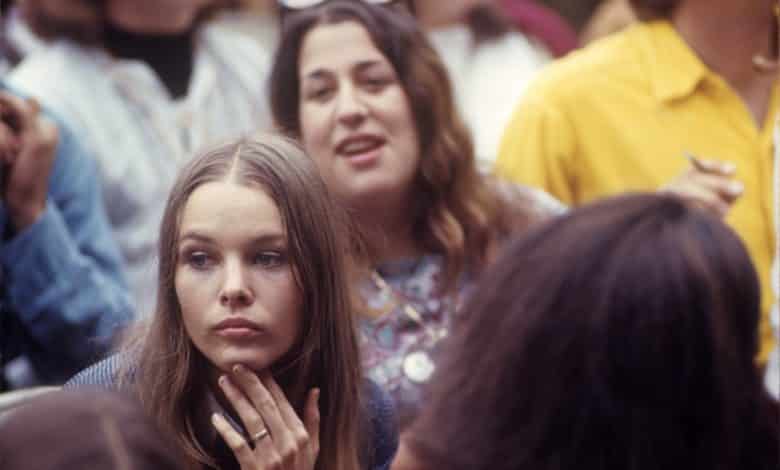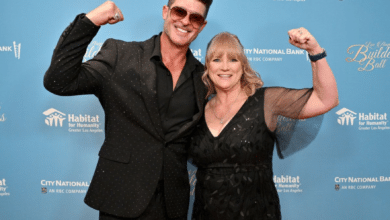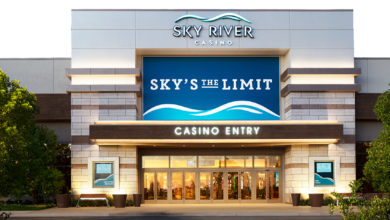Interview: Michelle Phillips On The Magic Of Laurel Canyon And The Music Of The Mamas And The Papas

There is palpable magic that exists in Laurel Canyon. Nestled in the mountainous region just above the Sunset Strip in Los Angeles, lives a rich history made up of artists who have seamlessly woven themselves through time, creating a tapestry of culture that’s been passed down to generations. These artists established Laurel Canyon as a music Mecca in the ‘60s and ‘70s, leaving an imprint that would turn a literal place, into a state of mind.
Groups such as the Mamas and the Papas, the Byrds, Love, The Doors, and Crosby, Stills, Nash & Young, found their home there. “[Laurel Canyon] has always had a magic to it, long before even the hippie musicians arrived,” Michelle Phillips tells Hollywood First Look Features. As one of the four founding members of the Mamas and the Papas, Phillips pioneered the music revolution that was happening there at that time. “There have always been a lot of artists that lived up in Laurel Canyon… Even silent screen stars and people who worked in television… It brought with it a lot of creativity during the Beat Generation. People went there because it was cheap to live there. It’s not cheap to live there anymore, but it was then [laughs].”
At that place in time, artists regularly lived, played, and fraternized together. There, in the heart of Los Angeles, was a community of creatives who ushered in the evolution of modern music. The scene went from folk to electric to R&B to the blues to country, and the world watched as everything melded into a beautiful amalgamation of rock and roll.
The latest look into those famed tales from the hills of Hollywood is “Laurel Canyon,” a new two-part docuseries airing on EPIX. The first part kicks off on Sunday, May 31, at 9/8c, followed by the second part on June 7, airing at the same time. Director Alison Ellwood (‘History of the Eagles’) dives into the past with a fresh perspective. With commentary from photographers Henry Diltz and Nurit Wilde, the docuseries features rare and unearthed footage, which shines a light on that era like never before. One of the stories highlighted is how the song “California Dreamin,’” came to be.
“I was dying to get out of New York and come back to California. I had been in New York with John for about three years,” Phillips recounts over the phone. “He said, ‘We can’t leave New York because this is where the music is.’ So, I just did nothing but complain about living in New York [laughs]. One night, John woke me up in the middle of the night. He said, ‘I’m writing a song, let me play it for you.’” Michelle was tired and reluctant but indulged her then-husband/bandmate. “He plays me the first verse of ‘California Dreamin,’ and I said, ‘That’s really beautiful, John.’ He says, ‘Get up and help me write it… You’ll thank me for this someday’ [laughs]. So, I got up and wrote the second verse. Then I said, ‘Just go back to that first verse that you read, and that’s it. It sounds great.’ He said, ‘Thanks, honey.’ And I went back to sleep. I can’t imagine what my life – I had no idea how that was going to change my life.”

Michelle Phillips is featured in the new docuseries, ‘Laurel Canyon,’ airing on EPIX. Credit: EPIX docuseries: Laurel Canyon.
Fifty-five years later, and “California Dreamin’” remains to be an anthem for so many. It’s been placed in countless commercials and films and has been covered by everyone from José Feliciano to Queen Latifah to the Beach Boys. “People just love that song,” Phillips continued. Her detailed accounts of fans over the years who have approached her and explained how that song has changed their lives for the better, mostly prompting cross-country moves to the Golden State, plays as vivid as the night she helped pen the iconic tune. “It’s a song that, as we say, ‘Has legs,’” she added. “(Twelve Thirty) Young Girls Are Coming to the Canyon” is another Mamas and Papas’ track that has recently had a lot of play, thanks to Quentin Tarantino’s “Once Upon a Time.. in Hollywood.”
“I mean, that’s true,” Phillips pointed out about the song. “There were a lot of young people that just had a guitar with them, and they could go up the street, or down the street, or around the corner, up the hill. They could hang out with their friends and play, and sing. That’s fun [laughs]. It’s a fun thing to do. You know, kind of hang out, and drink wine, and smoke some pot with your friends, play and sing, and listen to the song they wrote last night. Because everybody knew each other long before we all ended up in Laurel Canyon, we knew each other from the folk scene. Everybody in that documentary was a folk singer before they were in groups or living in Laurel Canyon.”
The spirit of Laurel Canyon that Phillips effortlessly evokes is very much captured in the new docuseries. It’s a feeling that people still try to embody today. That call that she speaks of remains. “It was like a great big commune,” Phillips describes. “And everyone was getting success, which was the great part about it. I mean, you could sit around with all of your friends and everyone would have a record on the charts, or about to get a record on the charts, or had had a record on the charts [laughs]. It really was fun. That was our little bubble. Before us, the Beat Generation had its time there also. But I think the geography of the Canyon made it very easy. If you wanted to go visit somebody, you just had to walk a few blocks, or drive a minute, and you were at somebody’s house. And everybody was very welcoming. Everybody was having a hell of a good time [laughs].”
Although the Mamas and the Papas only lasted as a band for a few years, the music that they made at the time, has rippled out through generations. “We were very compact,” Phillips explains. “We had Cass [Elliot] singing with that incredible contralto voice, and I had a little bit of a rock and roll kick with a soprano voice. Denny [Doherty] had the most beautiful tenor voice, and John [Phillips] had a good voice, too. John and Denny sounded so great together, and Cass and I sounded so great together. All we heard all the time from John was, ‘Blend. Blend. Blend.’ Cass could really sing at the volume that she could generate because she would just crowd me out. So, she had to learn how to sing with me, and I had to learn how to sing, basically [laughs]. And John was amazing. He had such a gift for vocal arrangements. I think some of my favorite background arrangements are Mamas and Papas. He just had, he had a crazy brain. And, he just found the four people that he could push around enough [laughs] to get us to make the sound that he wanted to hear.”

‘Laurel Canyon’ airs May 31 and June 7, at 9/8c, on EPIX. Credit: EPIX docuseries: Laurel Canyon.
As Phillips is the only surviving member of the folk-rock group from the ‘60s, she’s moved past her days in the Canyon, and (apart from being separated during quarantine), fills her time with the family and friends who surround her today. At 75 years old, her focus is not on the headlines, or the music business, but on the community of loved ones that she has built.
“When you all were working together and singing together, you’d run into each other all the time,” Phillips tells Hollywood First Look Features. “There was always the Sunset Strip with all of the clubs – the Whisky a Go Go, and The Trip, and On the Rox, there were all these places… [Now] I have my family. I have five grandchildren. I live in West L.A. in an adorable little house. I have my dogs, and I have friends. Where I live, it’s very similar in many ways to Laurel Canyon. Because my best friends are my neighbors who live up the street, or down the street… They’ll be jogging, and they’ll jog right onto my front porch and say, ‘Let’s have a glass of wine.’ Yeah, come on in, good idea. I’m full of good ideas,” Phillips laughed. “So, life goes on. ‘Ob-la-di, ob-la-da.’ But, you don’t hang with the same people. I don’t even hang with my acting mates [from] ’Knots Landing.’ I was always hanging out with Nicolette Sheridan and Michele Lee. Someone was always having a party, but, you know, Nicolette moved… So, the group gets smaller and smaller. It works just fine with me. I have a great, happy life. I have great kids, fabulous little grandchildren, and big grandchildren. I have a granddaughter and a grandson who are both at USC. I find that rather hard to digest [laughs]. My son Austin and his wife just had a little baby boy. I’ve only seen him [a few] times because of the lockdown… and they only live a mile-and-a-half away from me. So it’s hard. That’s hard. Because I’m kind of a very social person. You can only do so much FaceTime [laughs].”
Phillips reinforces what any of us who have ever been to Laurel Canyon already know. It’s this magical space where the future, the past, and the present seem to all be rolled into one. The music, the people, and the energy helped define the counterculture of the ‘60s and ‘70s, sparking infinite curiosity into a mystical neighborhood that inspired some of the greatest hits of our time.







